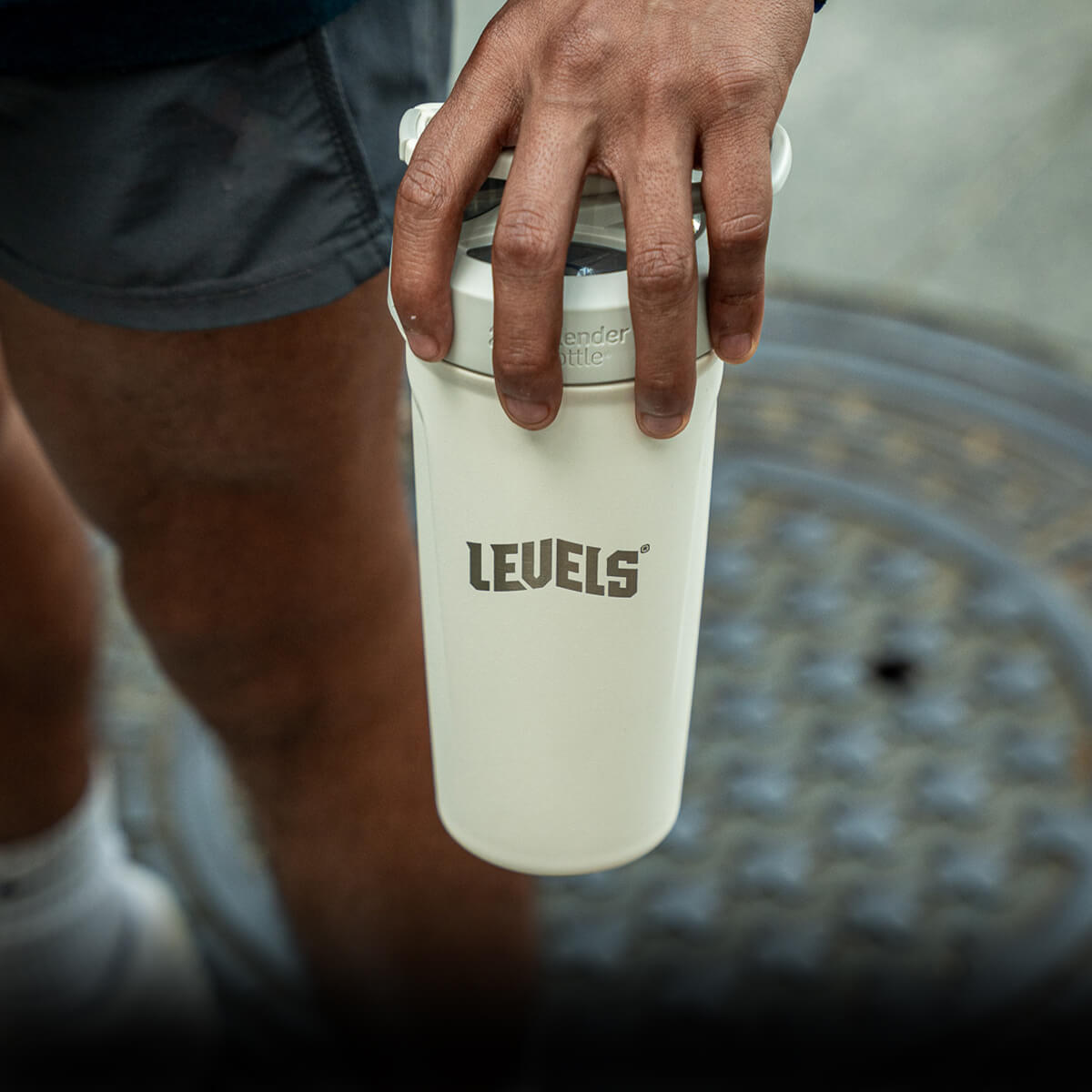Deloading is a popular method of lowering training volume and intensity in hopes of enhancing performance and recovery.
But does deloading work, or will it make you weaker and result in the loss of muscle mass? And is it even necessary?
Keep reading to learn everything you need to know about deloading, including who should deload, when and how to deload for every type of fitness, the pros and cons of deloading versus taking time off from training, deload week nutrition, and more.
What is a Deload Week?
Deloading refers to the practice of temporarily lowering the volume, intensity, or frequency of training.
The purpose of deloading is to support recovery in hopes of better performance, lower injury risk, or increased muscle mass.
Often, deload periods are about 7 days, but the exact length varies.
Another related concept is called tapering.
The main difference is that deloading is intended to support recovery after an intensive training cycle, while the goal of tapering is to maximize performance (usually before a competition), a strategy sometimes called peaking.
Deloading and tapering both work due to a phenomenon called supercompensation.
According to the supercompensation theory, your fitness temporarily declines after training, during a period called the fatigue and recovery phase.
After the recovery phase is complete, your performance improves during a phase known as supercompensation.

In a nutshell, exercise temporarily decreases your performance, but as you recover between sessions, you get better than you were before training.
Deloading offers your body a chance to recover further, especially after a difficult training phase, without taking time off fully from exercise or sport.
Does Deloading Work?
Yes, deloading works.
The underlying principle of deloading is sound, and it’s also validated by scientific evidence.
Strength athletes, bodybuilders, endurance athletes, Olympians, and professional team sports players include deloading or tapering phases in their training regimens.
For many competitors, tapering is an essential part of preparing for competition. The practice allows athletes to compete fresh, fully recovered, and with less chance of injury.

And unlike taking time off, tapering or deloading is less likely to lead to a decline in performance[*].
Tapering and deloading are well-supported in the sports science literature:
- A 2019 trial found that in strength-trained men, a deload week with 30% less training volume improved strength and power[*].
- Numerous surveys and studies suggest tapering or deloading practices are universal amongst elite powerlifters and strongman competitors[*][*][*][*].
- A 2007 meta-analysis found a moderate effect size on the performance of competitive swimmers, cyclists, and runners with a two-week training volume reduction taper[*].
- A 2016 study of college track and field athletes found significant improvements in overhead throw, competition throwing performance, peak countermovement jump force, and relative peak power following a one-week overreaching phase and a 3-week taper[*].
- A 2014 study of track and field athletes ages 16-26 showed a 4.8-5.6% increase in throwing performance following tapering phases, as well as similar improvements in leg press and squat one-rep maxes[*]
- A 2018 paper found that in Olympic rugby sevens players, a partial taper with high-speed running before and between tournaments may enhance performance and reduce injury rates[*].
- A 2019 study found that in amateur triathletes, a two-week taper following an 8-week periodization cycle helped athletes avoid overreaching and allowed a parasympathetic (recovery-oriented) state to occur[*].
People who aren’t competitive athletes sometimes use deloading to prevent overtraining, especially when life is stressful.
Some people also incorporate regular, planned deloading into their workout schedules. Doing so allows them to train harder than they otherwise would (a technique called overreaching) and then fully recover afterward[*].
When to Deload
Some people opt to deload regularly, while others do it spontaneously when they’re feeling run-down.
If you plan on regular deloading to enhance recovery and performance, each deload period should come immediately after the most intensive portion of a given training cycle.

According to a 2010 paper, training at high intensities prior to deloading maximizes performance gains for moderately-trained as well as highly-trained individuals[*].
Depending on how your training regimen is structured, you can plan a deload week one out of every 4, 8, 6, 10, or 12 weeks. The more often you deload, the smaller the decreases in volume, intensity, or frequency should be.
On the other hand, if your approach to training is more casual, you probably don’t need to schedule regular deloading.
Instead, you can listen to your body and monitor your exercise performance.
Increased soreness, a dip in fitness, or a training plateau are all indications you may want to consider a deloading week (along with other measures to enhance recovery).
Also pay attention to life stressors. For instance, if you’re stressed at school or work, or not sleeping well, a deload week could counteract the negative effects of stress on training performance and injury risk.
Lastly, you may want to incorporate a deload week any time you switch from one training program to another. That way, you can start your new routine fresh and strong.
Subscribe to get the latest advice, sales, discounts, product drops and more. Join now and get 15% off your first order.
How to Deload
Deloading is highly individual, but you can use these tips as starting points.
Over time, through trial and error, you can determine the optimal strategy for your goals.
First of all, consider the following factors:
- Do you train more for strength or endurance, or a mix?
- Is your primary reason for deloading to deal with accumulated fatigue, or to boost performance?
- Do you compete?
As we’ve already discussed, deloading is a reduction in training volume, intensity, or frequency.
Out of all three factors, volume reduction appears to be the most important one according to the research we’ve reviewed in this article.
Of course, you can also mix and match, or reduce all three variables at once.
Deloading for Strength, Power, or Bodybuilding
For strength training or bodybuilding, examine your exercise program and make the decision of what to change case-by-case for each exercise.
As an example, you might choose to reduce the reps or sets (volume) on low-rep, heavy lifts and the loading (intensity) on higher-volume lifts, or vice versa.
You may also opt to temporarily eliminate some exercises altogether, which is another way to reduce volume.
Evidence suggests that in strength and power training, reducing volume and maintaining the same intensity (loading) delivers superior results for performance[*][*].
But the same evidence suggests that reducing intensity in addition to volume may be better for reversing fatigue[*].
If your main reason for deloading is to increase strength and power performance, keep loading the same but reduce volume (total weekly reps across all lifts) by 30-50%.

But if you’re deloading because you’re fatigued, you’ll want to reduce the loading on at least some exercises, too.
A week-long deload is usually enough for most people, but if you’re extremely fatigued, there’s nothing wrong with deloading for longer periods of two weeks or more.
Deloading for Endurance and Other Competitive Sports
A 2007 meta-analysis (Bosquet et al.) found that for competitive endurance athletes, decreasing training volume by 41-60% for two weeks without altering intensity or frequency was the most effective deloading strategy to enhance performance[*].
If you’re an endurance enthusiast who doesn’t compete, try one week instead of two.
Like strength athletes, overly-fatigued endurance athletes may also want to reduce intensity (pace) along with volume.
If you’re an athlete who attends practice sessions, ideally you can still focus on skills and other technical aspects of your sport during practice, but with a lower overall intensity and volume during your deload or taper.
And if you compete, be sure to factor in your competition schedule and speak to your coach (if you have one).
In-season deloading or tapering should fit into your overall training schedule and lend themselves to peak competition performance, while off-season deloading periods may last longer to maximize recovery.
Supporting Recovery While Deloading
Remember to also prioritize recovery techniques like active mobility, static stretching, foam rolling, relaxation, and plenty of high-quality sleep while deloading.
Nutrition is also vital during deloading.
You should eat plenty of protein and calories to promote recovery and muscle repair, but you may want to reduce carb intake since your activity levels will be lower.
Who Should Deload?
Not everyone needs to deload.
For example, people who train at relatively low intensities or infrequently don’t need to deload regularly because recovery is not a limiting factor in their training progress.
If you don’t work out hard, or don’t train more than twice a week or so, skip the deloading week.
And similarly, people with work or family situations that sometimes result in forced time off probably shouldn’t deload.
After all, if you’re already having a hard time fitting in as much training as you’d like, deloading would be a step in the wrong direction.
That said, anyone who’s feeling run down, has trained at a high intensity recently, or is about to switch to a new program may benefit from a deload week.

Another option to consider is taking approximately one week off instead of deloading. According to one study of strength-trained men, time off resulted in increased maximal strength after an 8 week training period[*].
A separate study found that after two weeks off from training, a group of power athletes had a 19.2% increase in testosterone, a 58.3% increase in plasma growth hormone, and a 21.5% decrease in plasma cortisol (a 67.6% increase in the testosterone-to-cortisol ratio)[*].
In contrast, the deloading or tapering studies we’ve already discussed don’t show similar hormonal improvements.
If you’re sick, extremely fatigued, or just feeling tired of exercising, taking a week or two off completely is probably a better choice than deloading.
The hormonal changes could set you up for success when you resume exercise.
Taking time off also makes the most sense if you’re going on vacation, traveling, or don’t have access to training equipment for any other reason.
Will deloading or taking time off make you weaker, or result in losing strength or athletic performance?
The answer is no.
If you do it correctly, deloading preserves or even boosts performance and reduces fatigue levels and injury risk.
But if you deload without a good reason, you’ll miss out on gains you could have made by training at your usual volume and intensity.
The Takeaway: Is Deloading Necessary?
Deloading isn’t necessary for everyone.
But it is a useful option for anyone who trains hard, competes, or simply needs to focus on mental and physical recovery due to stress.
More isn’t always better. Deloading or taking time off could boost your performance, increase your energy levels, and lower your risk of injury or burnout.














